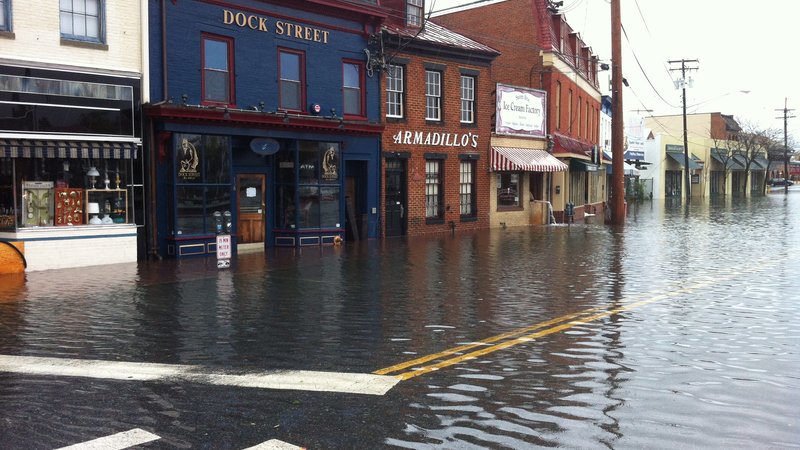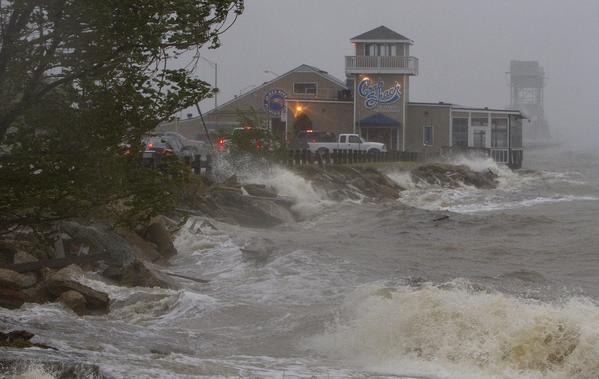Taking on Climate Change Through Resilience.


(I prepared the following piece for a news outlet that lost its funding too soon thereafter.)
“Resilience” read the sign board at the historic African-American Madison Avenue Presbyterian Church, a modest 2-story structure in a minority neighborhood near my office in Baltimore.
I can imagine some of the sermon: We’re called to rely on each other! These are hard times. Too few jobs. Drugs. Gangs. Incarceration.
As a precept of Resilience, such preaching would, for instance, also address how to cope with personal property damage from natural disasters. Flooding and ripped off roofs come to mind.

Superstorm Sandy and Hurricanes Katrina and Isabell, coupled with global-warming-induced sea-level rise, have fostered keen interest in Resilience, as it’s called.
At a recent expert panel event on Resilience, one speaker I heard was HUD assistant secretary Harriet Tregoning. “Why we are not talking about buildings,” she declared in her opening, is because it’s what happens around them that’s critical for you and me. It includes a fabric woven of business, government and community relationships.
Resilience addresses shocks and stresses, and, while not geared toward any single shock or stress, anticipates a future way of life in our cities and towns that will reveal corresponding traumas. One question to answer is how to address the identified vulnerabilities and when?
What’s disappointing is that many local governments appear to be failing to take the reins of the potentially devastating effects on physical and communication infrastructure, and economic and social vitality resulting from climate change liabilities.
On the day Superstorm Sandy started whacking Washington, D.C., with public transit largely stalled, bike-sharing was the way to go…until the Feds’ Office of Personnel Management shut down all area agencies at exactly 3pm. So, this alternative transit “system” wound up jammed due to a tidal wave of outgoing riders with few means of getting the bikes back. No Resilience planning there.
It can also address in advance what to do about beleaguered coal mining communities such as starting incubators for new industry. Or, decentralizing the grid.
Leaving aside the possible loss of many lives, there are other negative impacts from extreme weather events. The job and housing markets can be upended. Free-fall economic loss is another. Sandy loss estimates range from $50 to $65 billion. Think of what that money could buy in holistic planning and smarter infrastructure? Where’s the rock star that can show us how to leverage this scale of lost investment before the coming natural disaster?
Good to know that one business stakeholder, The International Economic Development Council, offers resilience tools for disaster preparedness and economic and social recovery at its website, RestoreYourEconomy.org. The Envision sustainable infrastructure rating system is another tool. Rand Corp. offers online training for communities, including faith-based.
Respectfully taking exception to Tregoning’s opening remark, denying new or “pop-up” building permits in flood zones and other risky areas is fair mitigation strategy—‘though certainly distasteful to many.
How about disaster insurance? Risk management in light of major natural disasters is a key. Re-insured policies can offer immediate cash to governments strapped in emergencies to pay for all manner of the unexpected.
Wanting to see what Internet visibility there is for Resilience in the Mid-Atlantic states, I looked at the sites of major coastal and inland waterway cities.
Philadelphia has initiated programs of some promise, one of which is focused on watershed and stormwater management strategies. Good.
Potentially of greater utility, Virginia has established Resilient Virginia, a state-wide public-private coalition with a goal to “re-invent the region [my italics] around a shared understanding of how to live with water, in response to on-going environmental changes.” Regrettably, it’s underfunded. James River and Hampton Roads communities are definitely at further risk.

I’m disappointed by what little has been coming from Philadelphia’s or Richmond’s major media outlets about Resilience. Where’s the ink on this new and vital thrust? Where’s the concern?
HUD is trying to help. It’s funding a $1 billion National Disaster Resilience Competition with some private foundation support. Finalists from 40 states and communities submitted complete, specific project proposals by October 27th. Awards will be in January 2016. All have been previously struck by natural disasters.
While Philadelphia is not among the 40, the county including state capitol Harrisburg is. Virginia is the other among the mid-Atlantic coastal states. These can be our newest Resilience champions!
We should be glad to see how soon other governments without prior experience get on board too—before the next natural disaster hits their area.
More visibility for this critical problem and what’s being done to pro-actively and effectively address it is needed.